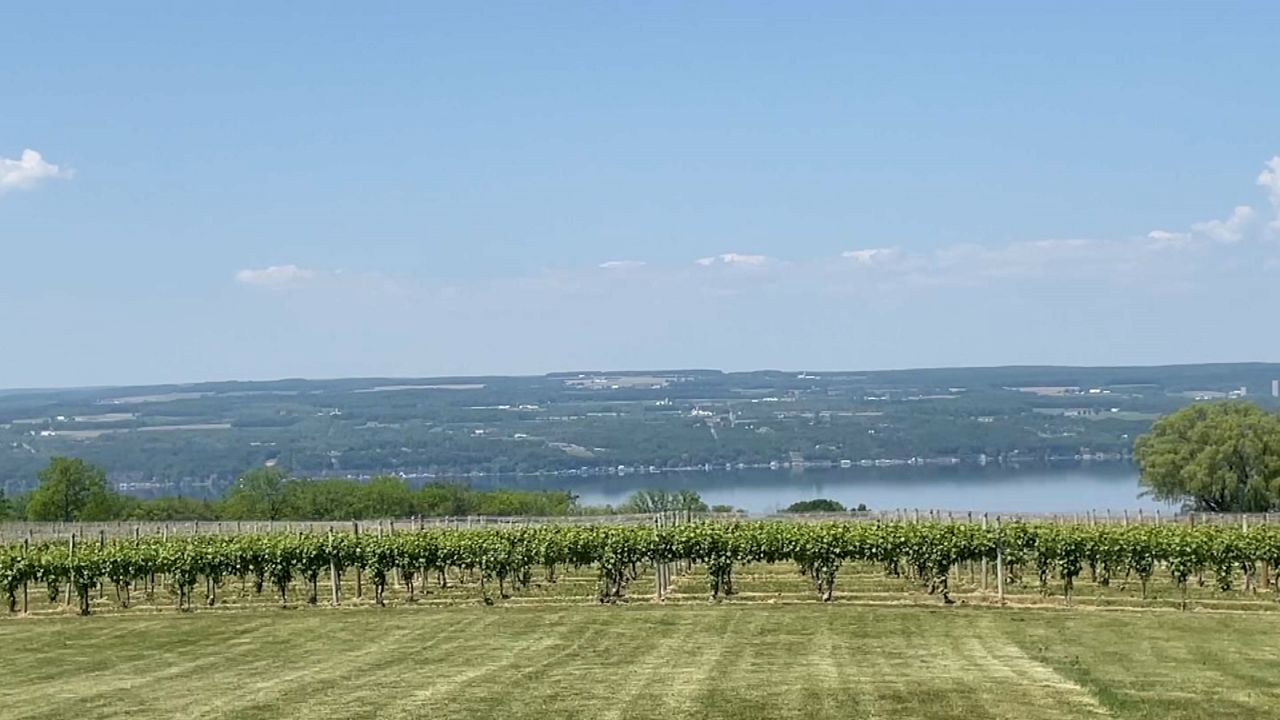LODI, N.Y. — The Finger Lakes region is known for its beauty on the lake and its nationally known vineyard products. But this year's weather has been an extra challenge for grapes vines across the state.
John Wagner has been working on his family farm since he was a kid.
"You've got to be very resilient to be a grape grower and get by all these weather conditions. And you know, it's one thing after another," Wagner said.
Wagner Vineyards Estate Winery has been around for five generations. They are one of the few estate vineyards in the Finger Lakes Region, which means they use their grapes for their wine production and they sell them across the region for other wineries use.
"Fifty percent of my time is out in the vineyard," Wagner explained, "It takes a lot to manage that and get all those varieties to full ripeness and harvest them."
This season, many of Wagner’s efforts were lost in one overnight frost.
“We had a chilly night here and typically we get a little bump from Seneca Lake and we escape [the] frost. We’ve escaped it many, many times and May 18, we didn’t,” said Wagner, explaining this instance as the worst frost damage across the region that he’s seen in his life.
This frost was a little different because the grape vines were more developed than they usually are by mid-May. This year there were several consecutive days in April when the weather hit 80 degrees. Wagner’s vines grew bigger, and faster, but the extra growth didn’t prevent any frost damage.
“Here’s a shoot that was out about four inches long on that night, and the cells in there got so cold that they froze, and those shoots are dead. But we also have some shoots that made it through. So it was a very mixed bag for us that night,” Wagner said.
The vineyard lost about half of its crop in a matter of hours. However, Wager considers himself lucky, because others across the state had more damage depending on their lay of the land.
Wagner’s Winery sits at the top of a hill at a higher elevation. Some of his vines progress lower in elevation as they near the water. He says the slope along the vineyard helped keep the frost moving down, rather than sitting on his crop for too long.

“This was very much more about the topography of the land," Wagner explained. “So if you look from the crop towards the winery, it's more steeply sloping. Those are affected less. Right here, we’re in the oldest riesling block. It’s actually 45 years old. And the site flattens out, so even though we’re closer to the lake, in the frost event, cold air is [denser] than warm air and that cool air comes down and pools next to the ground and it froze those shoots that were vulnerable due to the fact that they came out early in April because of the hot weather we had here.”
This isn’t the first time Wagner’s has been hit by the sometimes extreme weather conditions in the Finger Lakes.
“The size of the crop kind of does have a ripple effect. [In] 2021, we had a pretty good-sized crop, so inventories were good. Then in 2022, we had some drought conditions, smaller crop kind of balanced things out. Everybody was hoping for a more normal crop this year, just so that we could replenish the amount of juice, the amount of ice and all the wineries around here,” he said. “Unfortunately, it’s going to be back-to-back small years.”
However, Wagner’s is still hopeful they will have a successful season. Wagner also explained that each shoot has multiple opportunities for growth. Therefore, even on shoots that didn’t survive the frost, there’s still potential for growth in the coming weeks of warm weather. Wagner said these secondary growths might not provide grapes, but their growth will ensure a hopeful season for next year.
All of this will just make a more challenging harvesting season in a couple of months, because grapes will be ready to be picked at a more inconsistent rate.
“We’ve got our work cut out for us, but we’re hopeful we’re going to have a good year and we’re going to have fruit that we can bring in and continue to make wine from it," Wagner said. “It’s not disastrous, but it’s a big effect for us.”



